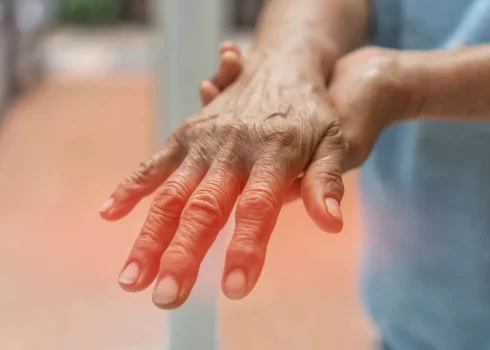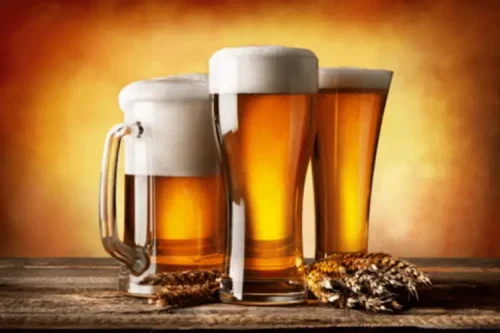
To truly understand physiological addiction, we need to dive into the intricate workings of the brain. It’s here, in the complex network of neurons and chemicals, that addiction takes root and flourishes. Finally, there’s the myth that if you relapse after beating your addiction, you have failed. Just like with other diseases, sometimes you need multiple treatments or repeat treatments. For example, we have long been told that people need to hit “rock bottom” before they’ll get help, but this isn’t true.

Health Problems Caused By Alcohol Dependence
Chronic alcohol vapor inhalation results in enhanced alcohol-reinforced behavior that lasts well beyond the dissipation of acute withdrawal symptoms (Gilpin et al. 2008b; Roberts et al. 2000a; Sommer et al. 2008). Similarly, this approach leads to increased anxiety-like behavior in rodents that persists many weeks into abstinence (Zhao et al. 2007) and can be reinstated with exposure to a mild stressor (Valdez et al. 2002). One hypothesis is that this negative emotional state contributes to relapse behavior. A neural circuit can be conceptualized as a series of nerve cells (i.e., neurons) that are interconnected and relay information related to a specific function. Within such a circuit, information is passed between neurons via electrochemical signaling processes.
Understanding Alcohol Use Disorder
- When alcohol is withdrawn, heightened functionality of glutamate receptors makes neurons excessively sensitive to excitatory glutamate signals, resulting in hyperexcitability.
- Alcohol use disorder can include periods of being drunk (alcohol intoxication) and symptoms of withdrawal.
- If you find that you ‘need’ to share a bottle of wine with your partner most nights of the week, or always go for a few pints after work just to unwind, you’re likely to be drinking at a level that could affect your long-term health.
- Amidst the worsening polysubstance overdose crisis driven by illicitly-manufactured fentanyl, accurately identifying opioid use disorder is crucial to target effective treatment and harm reduction efforts.
- Meanwhile, JoJo’s father Joel — whom her mother met while attending AA meetings and divorced early in her childhood — came in and out of her life.
Changes in the activity of the reward circuit mediating the acute positive reinforcing effects of alcohol and the stress circuit mediating negative reinforcement of dependence during the transition from nondependent alcohol drinking to dependent drinking. Key elements of the reward circuit are dopamine (DA) and opioid peptide neurons that act at both the ventral tegmental area (VTA) and the nucleus accumbens and which are activated during initial alcohol use and early stages of the progression to dependence (i.e., the binge/intoxication stage). Key elements of the physiological dependence on alcohol stress circuit are corticotropin-releasing factor (CRF) and norepinephrine (NE)-releasing neurons that converge on γ-aminobutyric acid (GABA) interneurons in the central nucleus of the amygdala and which are activated during the development of dependence. The positive reinforcing effects of alcohol generally are accepted as important motivating factors in alcohol-drinking behavior in the early stages of alcohol use and abuse. With different operant conditioning procedures, researchers can determine the time course, pattern, and frequency of responding for alcohol.
- If you regularly drink as much as 14 units per week, it’s best to have three or more drink free days each week.
- Prevention strategies are also evolving, with a greater emphasis on early intervention and addressing underlying risk factors.
- Thanks to generous benefactors, your gift today can have 5X the impact to advance AI innovation at Mayo Clinic.
- Because only 3 of the 7 DSM-IV criteria for alcohol dependence are required, not all patients meet the same criteria and therefore not all have the same symptoms and problems related to drinking.
What is considered 1 drink?

However, some researchers are debating whether these compounds can affect alcohol-reinforced behavior without affecting consummatory behavior in general. During alcohol withdrawal, serotonin release in the nucleus accumbens of rats is suppressed, https://ecosoberhouse.com/ and this reduction is partially reversed by self-administration of alcohol during withdrawal (Weiss et al. 1996). Woburn Addiction Treatment is a leader in the addiction treatment field, with proven success in facilitating long-term recovery.
Addressing these nutritional imbalances is crucial, as they play a significant role in the overall recovery process for those dealing with alcohol-related health issues. This disruption can lead to significant daytime fatigue and poor concentration, further demonstrating alcohol’s pervasive impact on daily functioning. If you choose to drink, the UK Chief Medical Officers (CMOs) advise that to keep health risks from alcohol to a low level it is safest not to drink more than 14 units a week on a regular basis. If you regularly drink as much as 14 units per week, it’s best to have three or more drink free days each week. It’s partly down to your genes,11 but is also influenced by your family’s attitudes to alcohol and the environment you grow up in.


